Project managers know all projects are vulnerable to a variety of risks, but identifying the particular risks that may affect their project might be challenging. Luckily, there are several risk identification methods they can use, such as a premortem.
What Is a Premortem?
In project management, a premortem consists of a brainstorming session in which the project team members imagine a project has failed and think about potential causes. It sounds negative, but it’s simply a strategy that allows the project team to work backward from that point of failure to determine what might have caused it in the first place.
The discussions exploring the potential flaws that led to project failure are kept positive, with the goal being solely the identification of issues that caused the project to get derailed. The project manager then analyzes the various scenarios and their likelihood and takes preventative action to avoid such events from occurring over the project life cycle.
Once you complete your premortem analysis, you’ll need the right project management tools to plan, schedule and track your project. ProjectManager is robust project management software equipped with Gantt charts, kanban boards, project dashboards and risk management features so you can identify, track and mitigate project risks. Get started for free today.
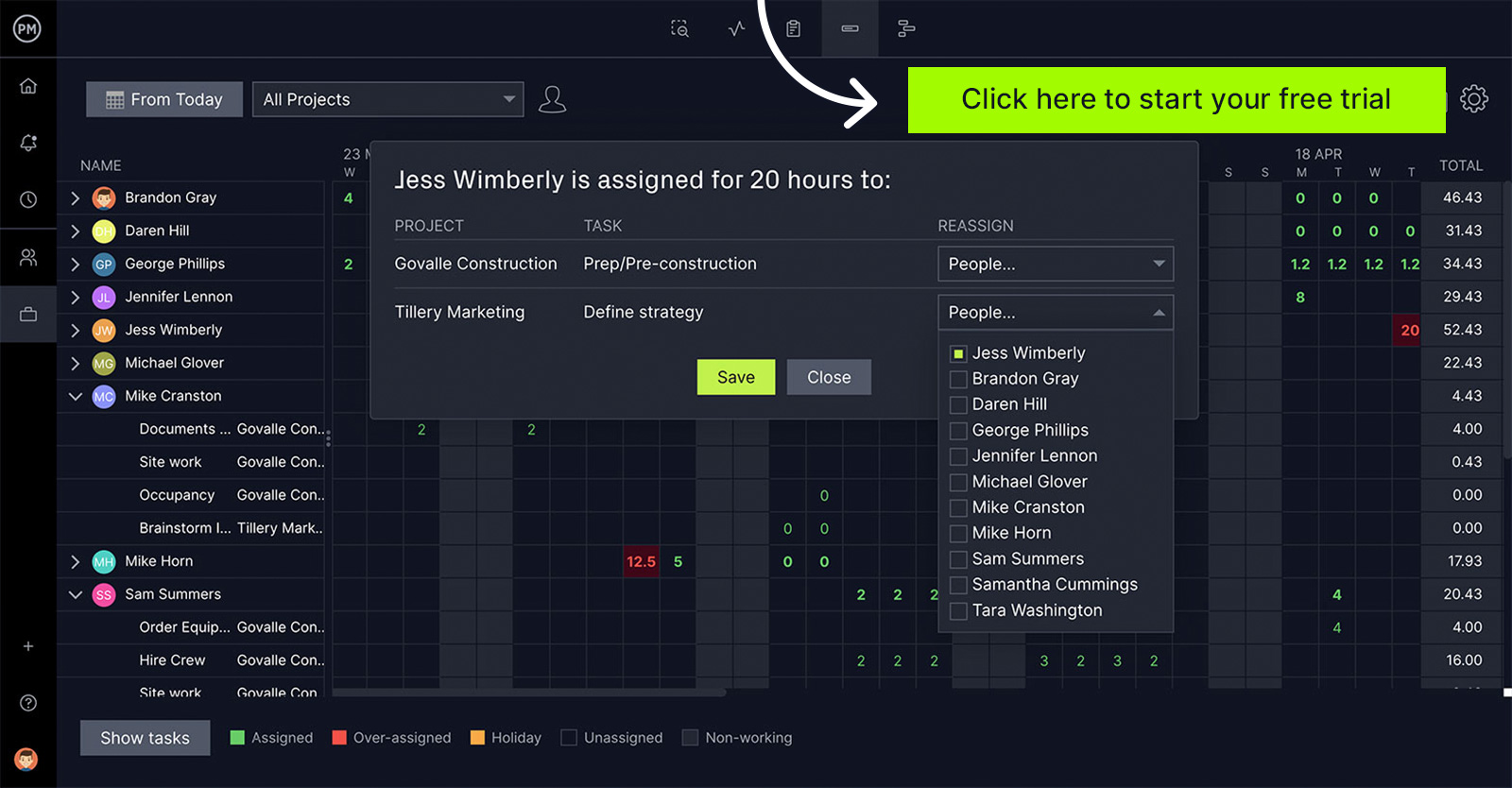
Why Is a Premortem Important for a Project?
A premortem analysis is important because it allows you to plan better projects. Your team will be thinking about various ways that a failed project could play out, which forces them to closely monitor factors that could make it fail. While it’s sometimes common to feel overly confident at the project outset and overlook risk factors, a premortem helps encourage preventive measures and reduces the risk of project failure.
Note the difference between a premortem and a typical risk assessment or critique. In the latter, there is the assumption that this or that might go wrong. However, with a premortem, the team is operating on the assumption that something did happen. It’s not approached as an abstraction.
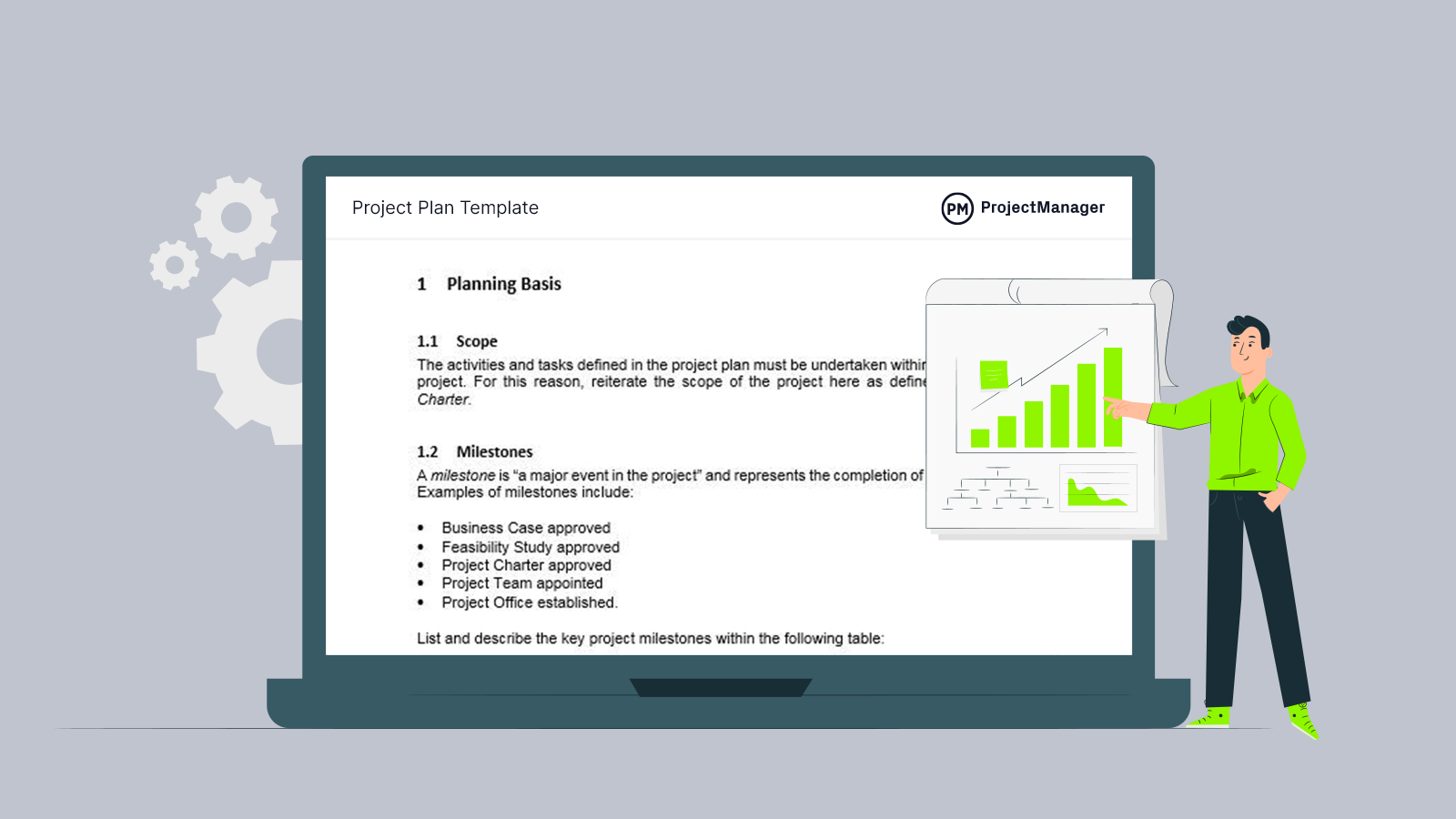
Get your free
Project Plan Template
Use this free Project Plan Template to manage your projects better.
Get the Template
Who Should Participate In a Premortem?
Typically, a premortem analysis includes the project manager, team members and stakeholders. If there are more relevant parties involved, feel free to invite them as well. From them, you can begin brainstorming potential risks.
The discussions exploring the potential failures are kept positive, with the goal being solely the identification of issues that caused the project to get derailed. The project manager then analyzes the various scenarios and their likelihood and takes preventative action to avoid such events from occurring over the life cycle of the project.
How to Conduct a Project Premortem Meeting
A premortem meeting is similar to a team-building exercise. In a sense, it will tighten the bonds of your team as they explore the coming project as if it was finished and failed. Therefore, the activity is not only practical in terms of better planning but also solidifies your team, making them more productive.
- Prepare: Before you start, make sure the team has been briefed on the project plan. Then an assigned leader tells the team that the project has failed. This leader isn’t necessarily the project manager, though it could be. However, it’s recommended to add the project manager to the team for their unique perspective.
- Why did the project fail? Give the team an hour or more to sit in groups and brainstorm every possibility as to why the project failed or, if you prefer, have them do so individually. Tell them to be as imaginative as they can. Have them write it down. Any idea is worth collecting, even if it’s impolite. No one will be punished for their reasoning if it’s serious. This isn’t the time to feel threatened or hold back.
- Share your reason: The leader asks each group or individual to share only one of their reasons for project failure. The next person reads their reason, but it must be a different one from those that proceeded it. These reasons are listed on a document or spreadsheet.
- Review & revise: The project manager takes this list and reviews all the various reasons for the project’s failure and uses this information to strengthen the existing project plan.
Premortem Example
Let’s look at a premortem example to illustrate how the process works. For our example, let’s say that you’re putting together an online course about how to play a guitar. You’ll be promoting the course on platforms such as Instagram and you’ve conducted market research to ensure there’s a group of people interested in this topic.
Identify Problems
The first step is to identify any potential problems with your course. If you have a team or anyone else involved, make sure to include them. Outline your ideal action plan; in this case, you want to launch a 6-month online course about learning to play the guitar for beginners, and your goal is to earn $500 when the course launches in three months.
Outline Worst-Case Scenario
From there, you can outline a worst-case scenario if your project fails. Outline the bigger picture into specific things that have gone wrong. For example, maybe the timeline gets delayed because your full-time job got busy or you’ve lost enthusiasm for the project. Or maybe you lost access to your Instagram account on the day of the launch. Another issue would be a lack of customer engagement with the course and your audience is smaller than you anticipated.
Identify Solutions
Next, identify solutions for each project risk. For example, you could outsource some tasks to freelancers if you run short on time or diversify your promotional efforts to ensure you’re not only relying on Instagram. For a lack of customer engagement, you can strive to get more audience feedback during the planning phase to make sure your audience is involved. You can also consider offering a special discount code for your most engaged followers.
Define Preventative Measures
The final step is to take preventative measures to ensure these problems don’t occur. You’ll want to factor in your timeline, budget, technology, audience and marketing efforts when making your project plan. Thanks to thinking through worst-case scenarios ahead of time, you better set yourself up for success.
Benefits and Risks of a Project Premortem
If this process sounds like science fiction, there’s research to back it up. A Harvard Business Review article noted a 1989 study conducted by Deborah J. Mitchell, of the Wharton School, Jay Russo, of Cornell and Nancy Pennington, of the University of Colorado, which found that when one image something has already happened it improves the chance of correctly finding reasons for future outcomes by 30 percent. That’s what a premortem does.
There’s the danger, of course, that the premortem identifies threats or weaknesses that aren’t real. Then the preventative measures stemming from this falsehood can drive a wedge into the proper execution of the project.
But the benefits of a premortem done properly are great. It offers a perspective often missing from a pre-launch risk analysis, in that it isn’t designed to only identify potential problems before they happen. It also makes those who are overinvested in the project lose a bit of their dangerous gung-ho attitude. And, as noted early, it gives everyone a voice and respects their input. Everyone can learn from one another and are sensitive to capturing issues before they turn into problems.
Premortem Best Practices
There are other things that can enhance these four basic steps of a well-done premortem. For one, don’t generalize. Always be as specific as possible when airing your reasons for the project’s failure. But don’t use this exercise as a forum to vent or settle scores. All points must be practical and actionable.
Also, project managers can assign owners to each of the priority reasons and those team members will lead the task of finding solutions. These responses should consider the risks, opportunities and existing plans and how they’ll impact them.
Premortem vs. Postmortem
You might have heard of a postmortem or post-implementation review. A project management postmortem is a way to dissect the finished project and see what went wrong, so steps can be taken in the next project to avoid the same results. The difference, obviously, is the premortem is a theoretical failure before the project starts and a postmortem is after the close of the project.
The problem with a postmortem is it’s after the fact. Yes, it’s helpful in setting up your next project to stay on track. But what about if you had one prior to initiating a new project? It’s important to note that a premortem and a postmortem are not mutually exclusive. They’re two sides of the same coin, and both serve a valuable purpose in leading a winning project.
Together, a premortem and a postmortem are helpful tools for understanding the underlying currents in a project and how they carry it one way or the other. The more knowledge you have of what makes your project tick, the more likely you can run it like clockwork.
Premortem Templates
Rather than making your premortem plans from scratch for each project, you can instead use one of our helpful and free project management templates. Below are some that can help with premortem analysis.
Risk Tracker Template
Identifying and tracking risks is essential during a premortem analysis. Use our free risk tracker template for Excel to systematically identify and track risks throughout your project in one convenient location.
Risk Matrix Template
Our free risk matrix template for Excel allows you to take any potential project risk, either positive or negative, and helps you determine how likely it is and what the impact on the project could be.
Meeting Minutes Template
Stay organized during your premortem meeting with our free meeting minutes template for Word. It captures your agenda and action items to help streamline your premortem meeting and make sure it’s as productive as possible.
ProjectManager Can Implement Premortem Lessons
When dealing with this much information, it’s always helpful to have a tool to help organize the data. ProjectManager can create a project in which the results of the premortem are collected in an online Gantt chart that can be shared with team members.
Gantt Charts for Planning
ProjectManager’s online Gantt chart is also helpful in that project managers can assign tasks to specific team members, who can then communicate at the task level, as well as attach relevant files and images. As plans change, that process can be tracked and monitored.
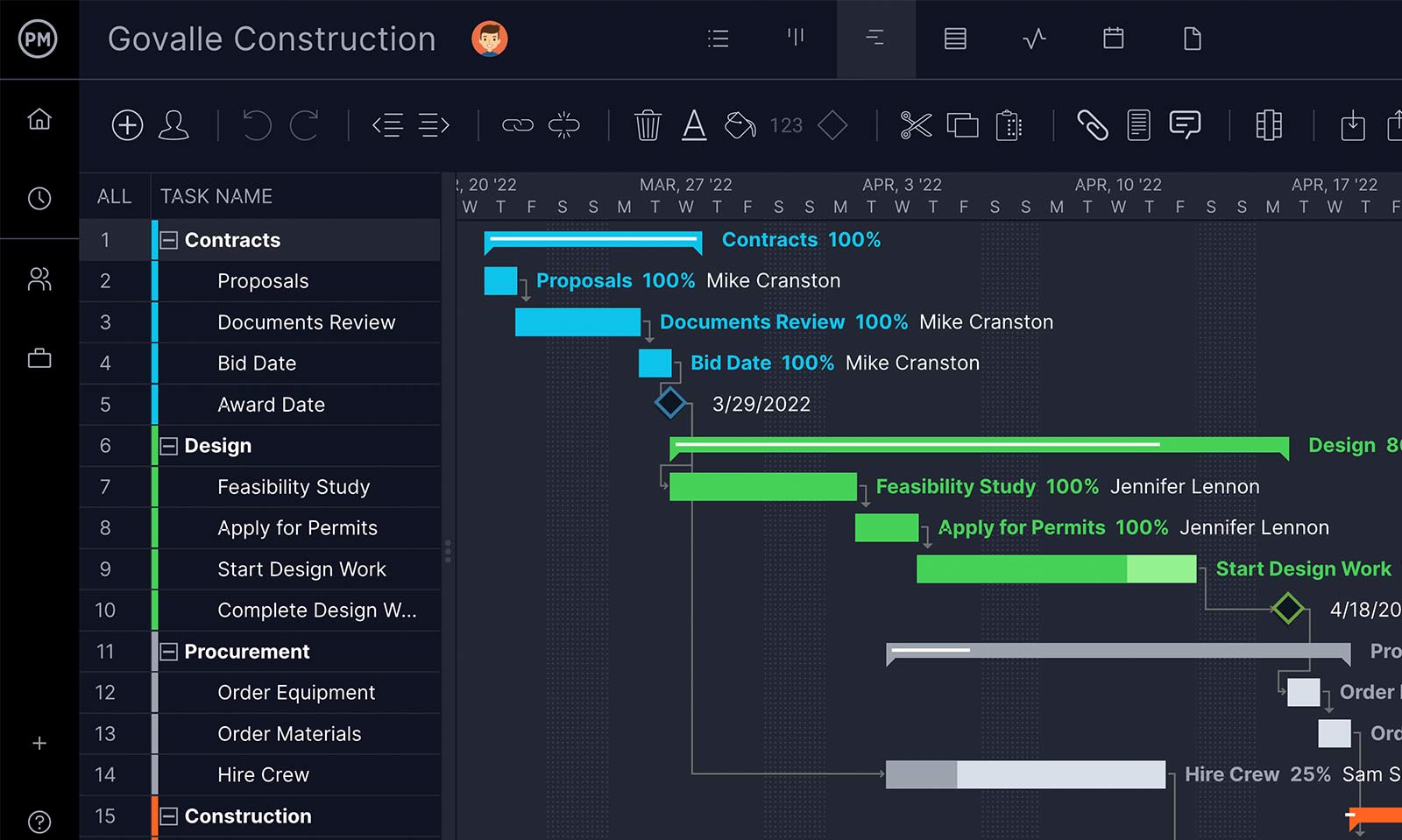
Task Lists for Productivity
Another task management tool that ProjectManager features is a task list that improves productivity and allows team members to stay on track. It can be viewed as a personal task list or across the entire project. These task lists can also filter by date, owner, project and more.
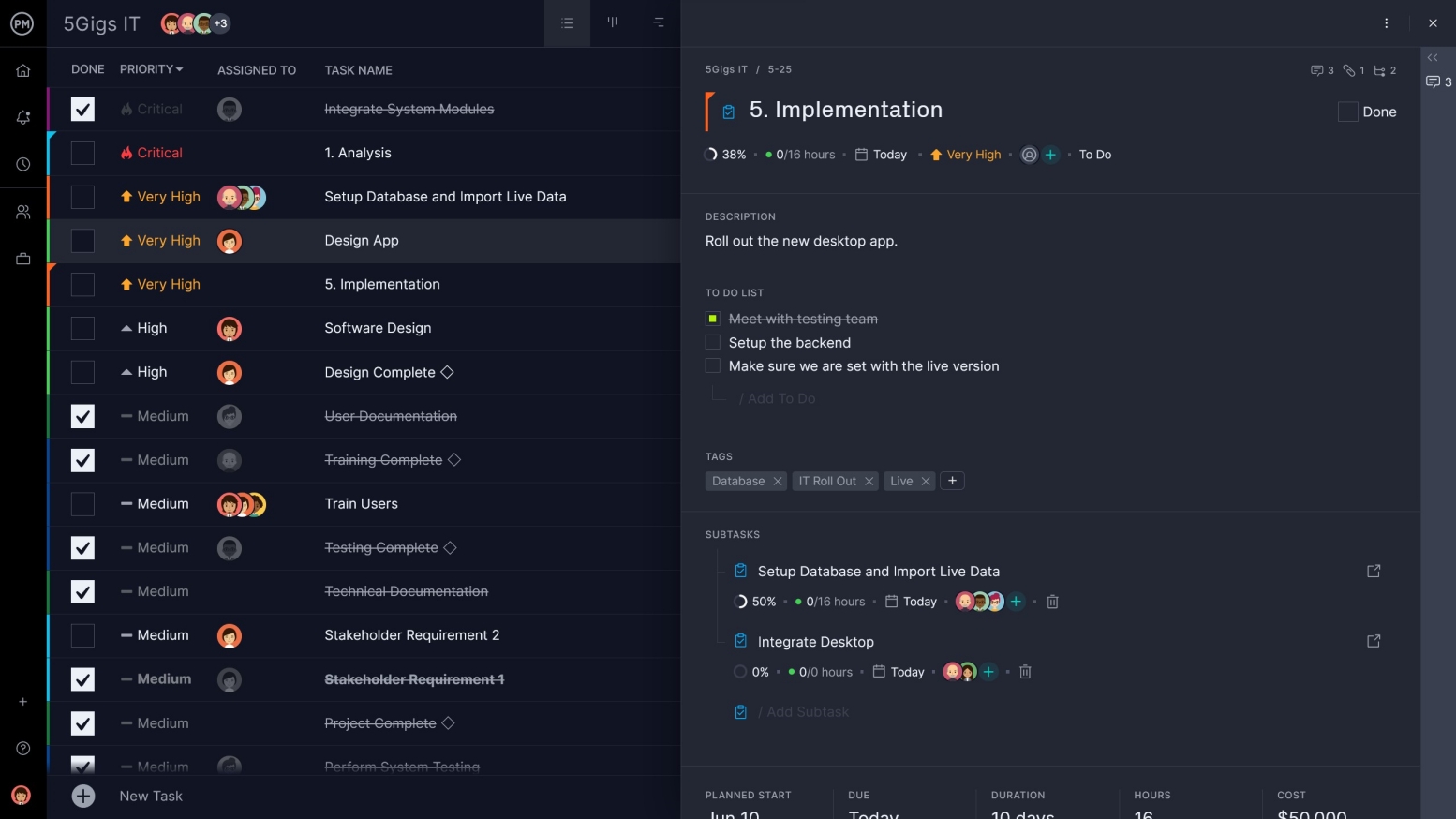
Kanban Boards for Execution and Collaboration
Tasks can also be viewed on ProjectManager as kanban boards, which provide a visualization of the workflow. The boards are broken down into columns, usually defining what needs to be done, what is being done and what is done. Under each of these columns-heads are cards, which are individual tasks. The card can also collect the ways the project team came up to solve the project failure in the premortem.
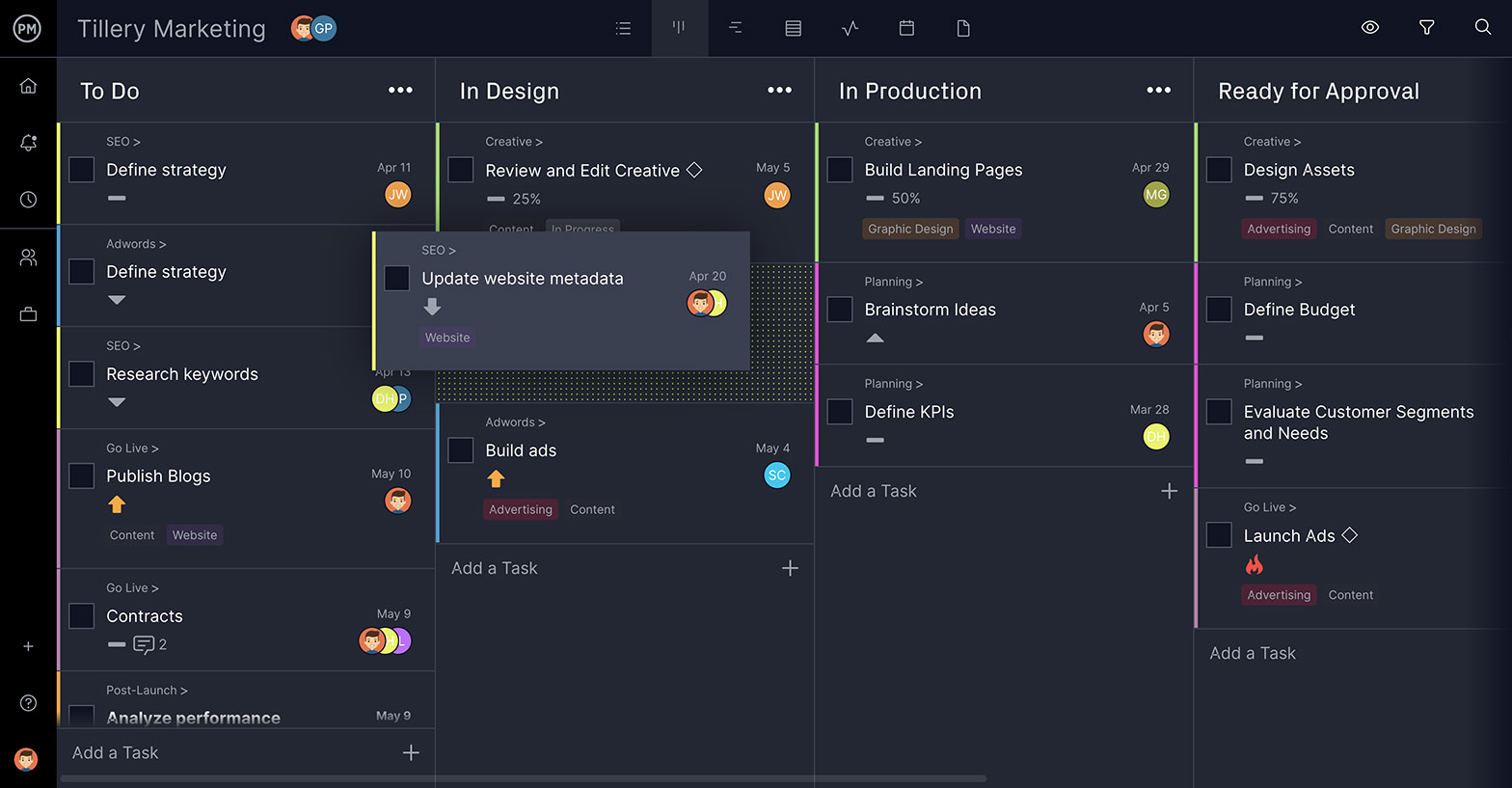
Each card has a timeline to note progress and can be marked by project, type, priority, due date, etc. There is room for a description, as well as a place to upload documents, spreadsheets or images. The cards can also be assigned to one or more team members, with a dialogue box to capture any questions or ongoing conversation from the team.
Premortem is another tool to keep your project on track. ProjectManager, an online project management software, is like a Swiss Army Knife of tools with all the features you need to lead a project to a successful closure. From planning with our online Gantt chart to managing and monitoring workflow with kanban boards and reporting with a real-time dashboard, every phase of your project is covered. See what it can do by taking this free 30-day trial today.

